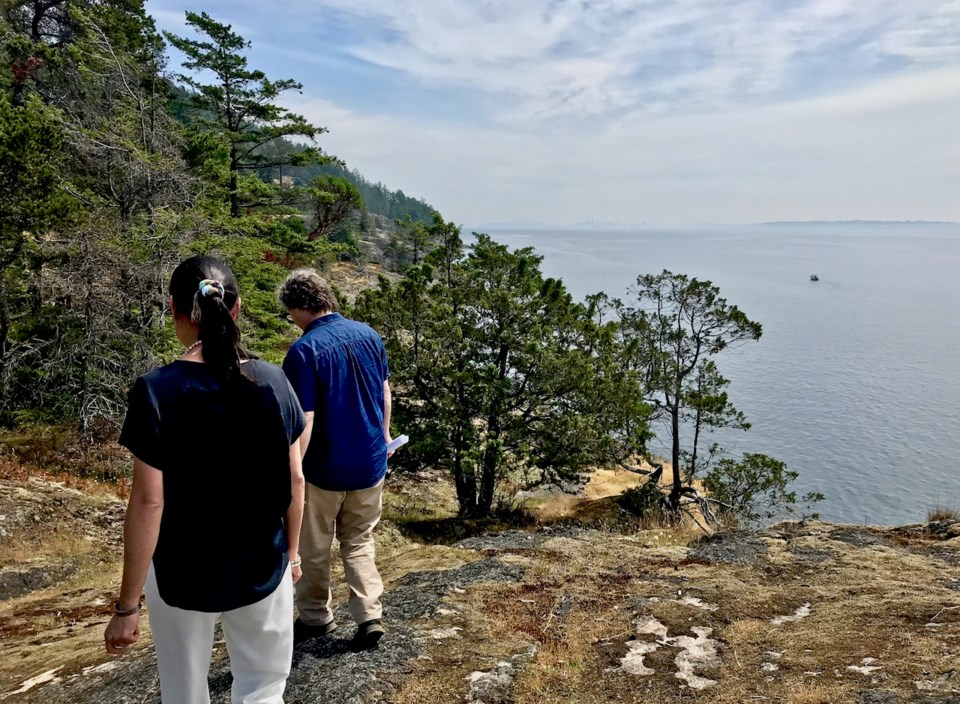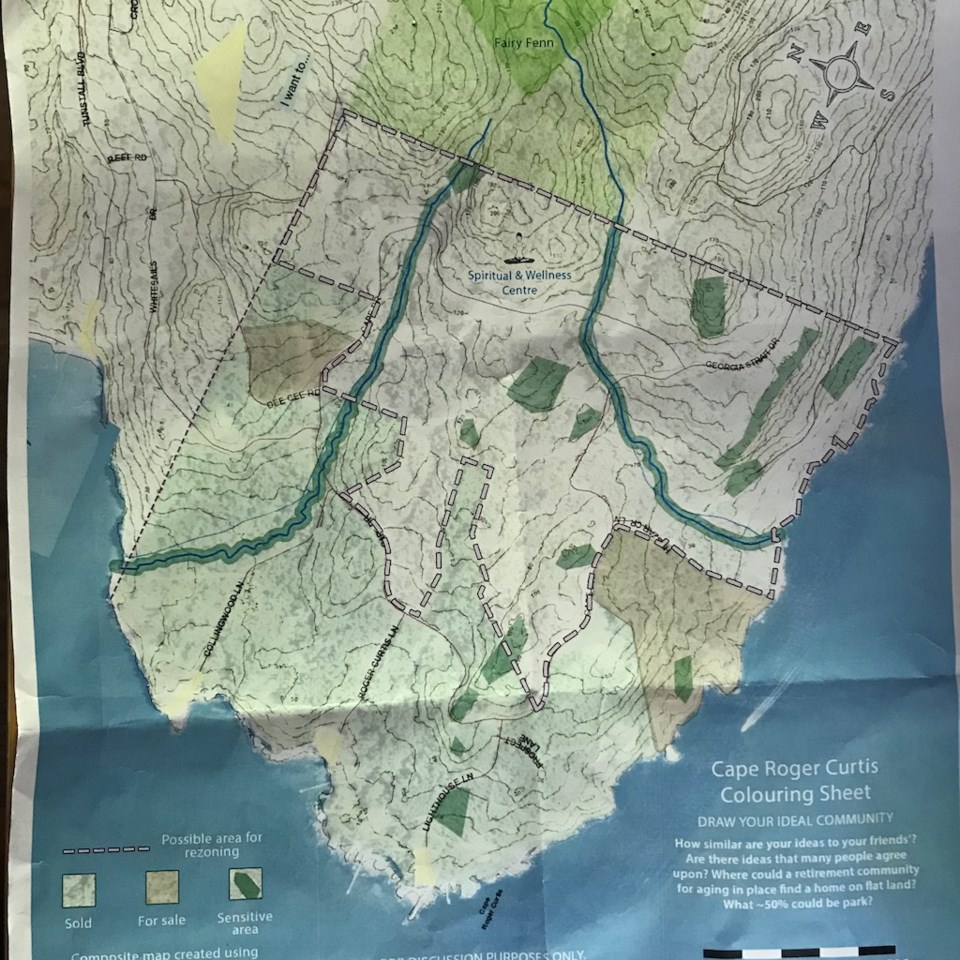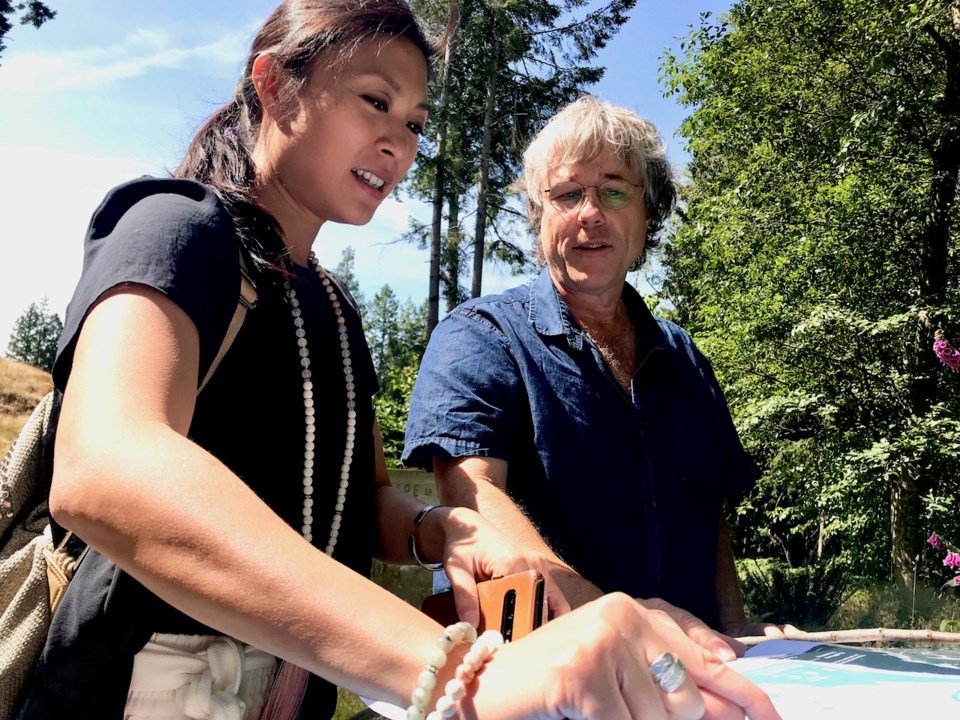When John Dowler announced to the community in May that developers had employed him to engage with islanders about the potential of rezoning 30-odd lots out at Cape Roger Curtis, Dowler compared it to Superman asking Lex Luthor to fix his brakes.
Over the previous decade, Dowler had publicly resisted both the Cape’s initial development and dock-building at the contentious property. But he said he had hope for the future.
“If we are ever going to take the risk of failing again in pursuit of a higher reward, I feel this is the time,” wrote Dowler. “What I’m thinking about are the lands that are still intact and how Bowen can best protect its natural heritage––our lungs, our Ark.”
The reaction among islanders has been mixed and cautious, as people remember the controversy of more than a decade ago. Developers Don Ho and Edwin Lee tried to rezone the previously pristine property (though private land, locals had used it as a park for decades) to allow more than double the Official Community Plan’s allowed 224 units built in exchange for preserving a significant swath of the waterfront as parkland. It was a 2008 election issue on Bowen and after the rezoning failed, the developers fell back to the default, dividing the land into 59 ten-acre estates. The Cape has sold 24 of those lots and retains ownership of 35. (Candy Ho was too part of this initiative, though in a less senior role.)
There was also controversy over the building of six large docks at the cape with questions around utility and attractiveness. And, during the 2018 municipal election, an accidentally published prospectus quoted two then-candidates commenting on the potential for an aging in place proposal for the cape, and this became an election issue.
In the months following his announcement, Dowler and the newly minted chief executive officer of the Cape on Bowen Community Development Ltd., Candy Ho, have spent many hours touring the cape with interested islanders. They’ve been asking what Boweners would like to see on the 320-to-350 unsold acres. With no rezoning proposal on the table, it’s all talk at this point.
Ho, who became CEO Aug. 1, clarifies on envisionthecape.ca that while her father (Don Ho) is co-founder of the Cape on Bowen and has a non-controlling interest in the property, Candy has no finacial interest. She advises the board and executes its decisions but doesn’t have a vote at the table. However, Ho says the board and shareholders support her community engagement approach.
To take on her role as CEO of the Cape on Bowen, Ho resigned as vice-president of branding and communications at Element Lifestyle Retirement, a retirement community development company that she co-founded.

Among her ideas for the cape are multi-family housing, aging in place facilities, a wellness centre, and professional as well as residential opportunities.
On the website Ho notes that “most of the current shareholders would like to move their money.”
“Which means selling significant majority interest in its holdings to a new capital investor who has the financial capacity, the vision and long-term commitment for a master planned development. [Shareholders] would be selling the property at wholesale value for its current zoning, but for a new investor to be interested, there has to be something that is greater than this zoning, both in economic value and in purpose,” reads the website.
The property currently has a retail value of $70 million.
“By cultivating support from the public for a community that would serve needs of islanders, they increase the likelihood of attracting investors who share a vision for habitat preservation, affordability and a place that islanders can once again consider their home,” reads the website. “They are actively seeking investors who can fund the vision for the future Candy and Don are working toward.”
But Ho also acknowledges that the Cape on Bowen remains a tricky topic for islanders.
“Candy recognizes that the first imperative step is to repair the relationship with the community through greater transparency and outreach,” reads the website. “She and her father acknowledge that the local reputation of COB was damaged by issues such as the division of the Cape into 59 expensive lots, installation of large docks and subsequent legal battles, some areas with particularly extensive logging, and the accidental release of a prospectus that appeared to imply support from specific community leaders for a rezoning.”
The once-opponents (Ho and Dowler) toured me around the property back in July (one week before Dowler was to fly off to Switzerland for a year, though he remains involved with the project). They discussed what they’re looking for and how the community had reacted so far.
“My main hope right now at this point in the process is to even see if there is any desire for something other than what is here now,” said Ho.
“I can have all the visions and dreams that I have but it doesn’t mean anything unless the island wants it,” she said. “The objective is to actually help the community with the potential of this land.”
“Is there an openness to something different? And if so, what does everyone want?” Asked Ho.
“I think openness is the best word for it because right now, there isn’t something specific to react to,” said Dowler. “And so we don’t have something on paper to show them.”
“There are good number of people who don’t want to talk about it at all, or have a pretty baked in strong opinion against either helping the owners or making any changes out here or increasing density,” said Dowler. “But of course, what we don’t know is what the numbers are. I’ve certainly been approached by a lot of people…[who] think that there could be a better result here.”
“We’d like people to let us know directly and in a public way what they’re thinking. But there’s, reasonable fear that if you put your name on a comment on a website, you could be attacked by someone, no matter what your opinion is,” said Dowler.
“The unfortunate thing is to actually be able to find any and investor, we really have to have a clear idea of what the island wants, because they have to run a financial analysis,” said Ho. “Because the current shareholders don’t have the additional capital or cash flow to move beyond [the 10-acre lots].”
Ho noted the need to balance expectations, because whoever comes in is unlikely to be a total philanthropist, so it’s important for the community to think about what they most want to see (even if that means no development).
While the next few months are about listening, both said that at some point, these discussions will need to go past talk.
“I would say, particularly for people who feel like, nothing should change here, it’s a really good time for them to come forward now,” said Dowler.

With several maps in hand, Ho and Dowler discussed the property’s landmarks. Throughout the map there are slivers of covenant-protected areas, the environmentally sensitive areas, many of which are drier than the rest of the island and therefore more sensitve (rocky coastal bluff).
The unsold acreage, delineated with a pink dotted line on the map, borders the property’s east-side waterfront and is otherwise mostly in-land. It includes a creek that winds through the cape development.
Ho said that ten years ago, the area was tested for water to sustain a much higher number of units than what would be considered here, but that, given locals’ concerns and this summer’s issues, she wants to take another look at it.
The scars of the cape controversy were apparent as Dowler described twisting the map orientation so he could look at it with fresh eyes.
“You do see a lot of changes that have happened since the cape first started. It used to just be one big massive forest and bush,” said Dowler.
“I drove around quite a bit and after a while, as you start thinking, okay, well, what could be? I think your imagination kind of gets freed up a little bit.
“It is very hard. It was hard for me as well to let go of the way it was.”



